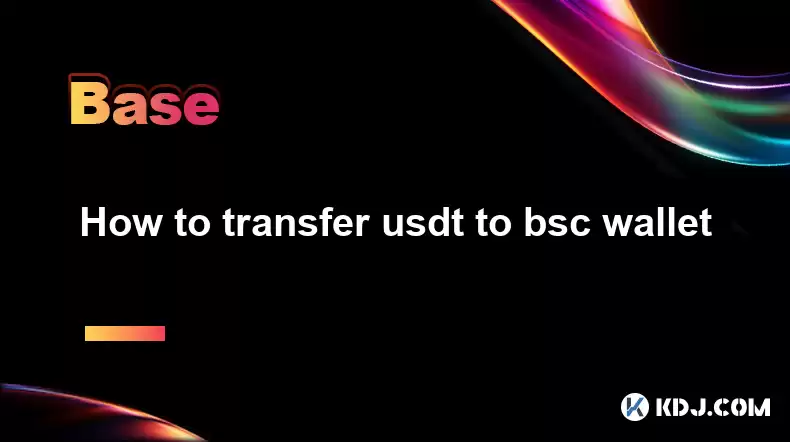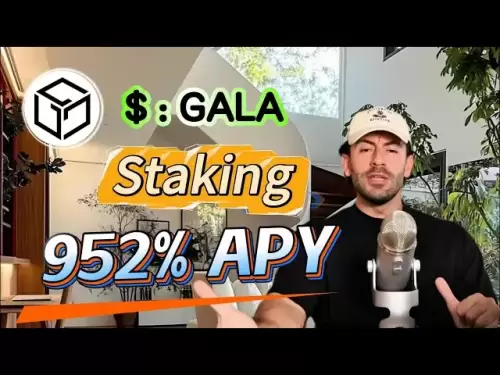-
 Bitcoin
Bitcoin $114500
-0.31% -
 Ethereum
Ethereum $3648
1.11% -
 XRP
XRP $3.033
-0.27% -
 Tether USDt
Tether USDt $0.9999
-0.01% -
 BNB
BNB $758.5
-0.32% -
 Solana
Solana $167.5
1.48% -
 USDC
USDC $0.9998
-0.02% -
 TRON
TRON $0.3331
0.74% -
 Dogecoin
Dogecoin $0.2039
0.25% -
 Cardano
Cardano $0.7419
-0.46% -
 Hyperliquid
Hyperliquid $39.21
2.66% -
 Stellar
Stellar $0.4049
-1.95% -
 Sui
Sui $3.483
-0.56% -
 Bitcoin Cash
Bitcoin Cash $570.8
2.89% -
 Chainlink
Chainlink $16.67
-0.57% -
 Hedera
Hedera $0.2470
-1.57% -
 Ethena USDe
Ethena USDe $1.001
0.00% -
 Avalanche
Avalanche $22.36
1.52% -
 Litecoin
Litecoin $123.4
4.35% -
 UNUS SED LEO
UNUS SED LEO $8.989
0.09% -
 Toncoin
Toncoin $3.324
-2.40% -
 Shiba Inu
Shiba Inu $0.00001219
-1.30% -
 Uniswap
Uniswap $9.811
2.54% -
 Polkadot
Polkadot $3.662
-0.07% -
 Monero
Monero $295.5
-3.85% -
 Dai
Dai $1.000
0.01% -
 Bitget Token
Bitget Token $4.345
0.24% -
 Cronos
Cronos $0.1380
0.95% -
 Pepe
Pepe $0.00001044
-1.14% -
 Ethena
Ethena $0.5981
-4.24%
How to transfer usdt to bsc wallet
To transfer USDT to your Binance Smart Chain (BSC) wallet, follow these steps: create a BSC wallet, transfer from a centralized exchange, use a bridge from another blockchain, or send directly from another BSC wallet.
Jan 23, 2025 at 06:00 pm

Key Points:
- Understand the different types of blockchain wallets.
- Create a BSC (Binance Smart Chain) wallet if you don't have one.
- Transfer USDT from a centralized exchange to your BSC wallet.
- Use a bridge to transfer USDT from another blockchain to BSC.
- Send USDT directly from one BSC wallet to another.
Steps:
1. Understanding Blockchain Wallets:
Blockchain wallets are software or hardware devices that store your cryptocurrencies. There are three main types of blockchain wallets:
- Software wallets: These are installed on your computer, smartphone, or tablet. They are convenient, but less secure than hardware wallets.
- Hardware wallets: These are physical devices that store your cryptocurrencies offline. They are more secure than software wallets, but less convenient.
- Paper wallets: These are physical documents that store your cryptocurrency keys. They are the most secure type of wallet, but also the least convenient.
2. Creating a BSC Wallet:
To transfer USDT to your BSC wallet, you first need to create a BSC wallet. There are many different BSC wallets available, but some of the most popular include:
- MetaMask
- Trust Wallet
- Binance Chain Wallet
- SafePal Wallet
- Ledger Nano X
Once you have chosen a wallet, follow the instructions to create an account. You will be given a unique wallet address, which you will use to receive USDT.
3. Transferring USDT from a Centralized Exchange:
If you already have USDT on a centralized exchange, such as Binance or Coinbase, you can transfer it to your BSC wallet. To do this, follow these steps:
- Log into your exchange account and navigate to the withdrawal page.
- Select USDT as the currency you want to withdraw.
- Enter the amount of USDT you want to withdraw.
- Enter your BSC wallet address in the recipient address field.
- Click the "Withdraw" button.
The transaction will usually take a few minutes to complete.
4. Using a Bridge to Transfer USDT from Another Blockchain:
If you have USDT on another blockchain, such as Ethereum or Bitcoin, you can use a bridge to transfer it to BSC. A bridge is a decentralized service that allows you to move assets between different blockchains.
There are several different bridges available, but some of the most popular include:
- Binance Bridge
- Polygon Bridge
- Anyswap Bridge
- Hop Protocol
- Celer Bridge
To use a bridge, follow these steps:
- Visit the website of the bridge you want to use.
- Select the blockchain you are transferring USDT from and the blockchain you are transferring USDT to.
- Enter the amount of USDT you want to transfer.
- Click the "Transfer" button.
The transaction will usually take a few minutes to complete.
5. Sending USDT Directly from One BSC Wallet to Another:
To send USDT directly from one BSC wallet to another, follow these steps:
- Open your BSC wallet and click on the "Send" button.
- Enter the recipient's BSC wallet address in the recipient address field.
- Enter the amount of USDT you want to send in the amount field.
- Click the "Send" button.
The transaction will usually take a few minutes to complete.
FAQs:
- What is the difference between a software wallet and a hardware wallet?
A software wallet is installed on your computer, smartphone, or tablet. A hardware wallet is a physical device that stores your cryptocurrencies offline. Hardware wallets are more secure than software wallets, but less convenient.
- What is the best BSC wallet?
There are many different BSC wallets available, but some of the most popular include MetaMask, Trust Wallet, Binance Chain Wallet, SafePal Wallet, and Ledger Nano X. The best BSC wallet for you depends on your individual needs and preferences.
- How long does it take to transfer USDT to my BSC wallet?
The time it takes to transfer USDT to your BSC wallet depends on the method you use. If you are transferring USDT from a centralized exchange, the transaction will usually take a few minutes to complete. If you are using a bridge to transfer USDT from another blockchain, the transaction may take up to a few hours to complete.
- Can I send USDT from one BSC wallet to another directly?
Yes, you can send USDT from one BSC wallet to another directly. To do this, open your BSC wallet and click on the "Send" button. Enter the recipient's BSC wallet address in the recipient address field. Enter the amount of USDT you want to send in the amount field. Click the "Send" button. The transaction will usually take a few minutes to complete.
Disclaimer:info@kdj.com
The information provided is not trading advice. kdj.com does not assume any responsibility for any investments made based on the information provided in this article. Cryptocurrencies are highly volatile and it is highly recommended that you invest with caution after thorough research!
If you believe that the content used on this website infringes your copyright, please contact us immediately (info@kdj.com) and we will delete it promptly.
- Altcoin Alert: Is Punisher Coin the Presale to Pounce On?
- 2025-08-06 06:50:11
- XRP Price, Bitwise, and the 2030 Forecast: Will XRP Hit the Big Time?
- 2025-08-06 06:50:11
- Ruvi AI: The AI Token Primed for CMC Listing and Explosive Growth
- 2025-08-06 06:30:13
- Michigan Pension, Bitcoin ETF, and Institutional Investment: A New Era?
- 2025-08-06 07:10:11
- Verb Technology's Bold Move: Acquisition, Rebranding, and a $558M Bet on Toncoin
- 2025-08-06 07:30:12
- Sushi's Sizzling Summer: AMA on August 6th & Market Moves!
- 2025-08-06 06:30:13
Related knowledge

What is the difference between CeFi and DeFi?
Jul 22,2025 at 12:28am
Understanding CeFi and DeFiIn the world of cryptocurrency, CeFi (Centralized Finance) and DeFi (Decentralized Finance) represent two distinct financia...

How to qualify for potential crypto airdrops?
Jul 23,2025 at 06:49am
Understanding What Crypto Airdrops AreCrypto airdrops refer to the distribution of free tokens or coins to a large number of wallet addresses, often u...

What is a crypto "airdrop farmer"?
Jul 24,2025 at 10:22pm
Understanding the Role of a Crypto 'Airdrop Farmer'A crypto 'airdrop farmer' refers to an individual who actively participates in cryptocurrency airdr...

What is the difference between a sidechain and a Layer 2?
Jul 20,2025 at 11:35pm
Understanding the Concept of SidechainsA sidechain is a separate blockchain that runs parallel to the main blockchain, typically the mainnet of a cryp...

What is the Inter-Blockchain Communication Protocol (IBC)?
Jul 19,2025 at 10:43am
Understanding the Inter-Blockchain Communication Protocol (IBC)The Inter-Blockchain Communication Protocol (IBC) is a cross-chain communication protoc...

How does sharding improve scalability?
Jul 20,2025 at 01:21am
Understanding Sharding in BlockchainSharding is a database partitioning technique that is increasingly being adopted in blockchain technology to enhan...

What is the difference between CeFi and DeFi?
Jul 22,2025 at 12:28am
Understanding CeFi and DeFiIn the world of cryptocurrency, CeFi (Centralized Finance) and DeFi (Decentralized Finance) represent two distinct financia...

How to qualify for potential crypto airdrops?
Jul 23,2025 at 06:49am
Understanding What Crypto Airdrops AreCrypto airdrops refer to the distribution of free tokens or coins to a large number of wallet addresses, often u...

What is a crypto "airdrop farmer"?
Jul 24,2025 at 10:22pm
Understanding the Role of a Crypto 'Airdrop Farmer'A crypto 'airdrop farmer' refers to an individual who actively participates in cryptocurrency airdr...

What is the difference between a sidechain and a Layer 2?
Jul 20,2025 at 11:35pm
Understanding the Concept of SidechainsA sidechain is a separate blockchain that runs parallel to the main blockchain, typically the mainnet of a cryp...

What is the Inter-Blockchain Communication Protocol (IBC)?
Jul 19,2025 at 10:43am
Understanding the Inter-Blockchain Communication Protocol (IBC)The Inter-Blockchain Communication Protocol (IBC) is a cross-chain communication protoc...

How does sharding improve scalability?
Jul 20,2025 at 01:21am
Understanding Sharding in BlockchainSharding is a database partitioning technique that is increasingly being adopted in blockchain technology to enhan...
See all articles

























































































